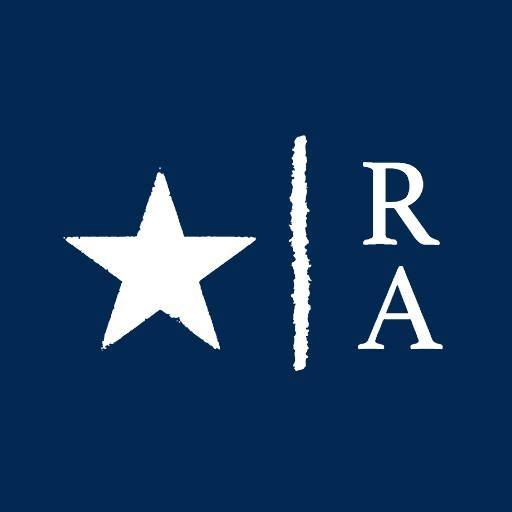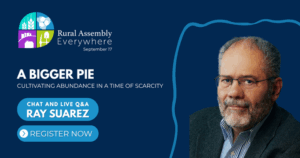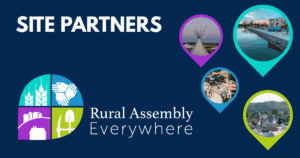Following our two Livestream Conversations on Rural Broadband in the Time of COVID-19 (Part 1 and Part 2), the Rural Assembly has compiled the following letter to the Federal Communications Commission (FCC) regarding extending broadband access in rural and native communities during the COVID-19 pandemic and beyond. The letter was endorsed by 44 organizations and 179 individuals. Thank you to everyone who signed on.
Short- and long-term recommendations are listed below and you can read the full draft letter to the FCC including the full list of sign-ons here.
Short-term recommendations:
- Require Lifeline providers to offer unlimited voice, text, and data services to Lifeline subscribers during the pandemic and for six months after to ensure subscribers can rely on these services during government and economy recovery efforts. Lifeline usage allowances were insufficient before the pandemic, and are particularly deficient now when individuals are relying more on communications services to remain connected. Lifting the Lifeline voice, text, and data services caps will provide appropriately increased access to these critical services during the pandemic and during the recovery period.
- Extend the 2.5 GHz Tribal Priority Window for tribes to access unclaimed spectrum licenses over their lands. Tribal governments and entities, the intended beneficiaries of this proceeding, are fully focused on protecting Native communities from COVID-19. An extension of the 2.5 GHz Tribal Priority Window will allow tribal governments to continue to devote their time, resources, and efforts on keeping their communities healthy and safe, and apply at a later date when they have time to recuperate.
- Encourage telecommunications companies to suspend all fixed and mobile broadband data caps and usage overage charges during the pandemic and for six months after the pandemic ends to allow for connectivity during government and economy recovery efforts. Shelter in place orders have intensified the use of telecommunications services. At the same time, 30 million Americans have applied for unemployment benefits.[1] Americans experiencing a sudden loss of income should not be worried about paying data overage charges precisely during a time when broadband services allow them to safely access social services, resources, family and friends. Because the high use of telecommunications services will likely gradually decrease as states reopen social and economic activity, data caps and overage chargers should be suspended for six months after the pandemic ends to allow for recovery efforts.
- Encourage ISPs to offer subsidized or free broadband service to tribal governments, radio and television stations, first responders, and hospitals on reservations, during the pandemic and for six months after the end of the pandemic during recovery efforts.
- Delay the RDOF Auction 904. The Rural Digital Opportunity Fund (RDOF) promises to distribute $20.4 billion, the largest amount for rural broadband investment. The RDOF Phase I Auction (Auction 904) is scheduled to take place in five months. However, small rural and Native-owned providers are currently focused on solving connectivity challenges during the pandemic and will be focused on helping communities stay afloat during recovery efforts. This means that providers with enough resources to both respond to connectivity challenges and participate in a complex auction will effectively be the only ones able to participate. Delaying the auction would allow small rural and Native-owned providers to recuperate and gather the necessary resources to participate; thus promoting participation and competition in the auction.
- Allow tribal lands that have received separate funding to be eligible for RDOF. Building broadband networks is expensive, and providers that choose to build networks in tribal lands need all the help they can get. Thus, the Commission should not disqualify tribal lands that have already received separate funding from state or Department of Agriculture programs from being eligible for RDOF funding. Multiple sources of funding are necessary, particularly to build networks in tribal lands and remote areas historically neglected by large telecommunications carrier investment.
- Require Auction 904 winning bidders that receive funding to build in tribal lands to demonstrate an established collaboration with the tribal governments of the lands where they received funding, within 180 days of being announced as winning bidders. Collaboration with tribal governments is critical for building broadband networks in tribal lands that actually extend connectivity to Native communities and protect sacred and historical sites. A winning bidder can demonstrate this collaboration with a letter of support from the tribal council of the tribal land they seek to serve.
Long-term recommendations include:
- The FCC should establish a Tribal Broadband Fund to provide targeted funding for broadband planning and deployment on tribal lands. Proposed in the 2010 National Broadband Plan, the Tribal Broadband Fund was recommended to provide funding for technical assistance training to tribal governments and entities to plan, construct, and maintain broadband projects on tribal lands.[1] These funds would be critical to enable tribal governments and entities to conduct feasibility and deployment studies to identify areas of broadband infrastructure needs on tribal lands. Such studies could also aid in improving data accuracy regarding the lack of infrastructure assets and capabilities on tribal lands and be used to challenge FCC Form 477 data inaccuracies. The Tribal Broadband Fund could also be leveraged to deploy broadband assets on tribal lands by providing targeted infrastructure funding and to also supplement resources with the other four Universal Service Fund Programs.
- Collect affordability and outage data, crosscheck data reported by providers, and survey consumers. The Broadband DATA Act[2] moved FCC data collection efforts in the right direction, but the Commission should do more to truly understand the status of telecommunications services in our nation. To understand the role of affordability in closing the digital divide, it is important that the Commission collect information about the price that customers pay. To understand the reliability of our broadband networks, it is important that the Commission collect data about network outages. To enhance information self-reported by providers and reporting errors in broadband access, these data collection efforts should be supplemented by FCC-crosschecking of data and independent FCC surveys with consumers.
- Establish interagency cooperation with the United States Department of Agriculture (USDA), the Department of Interior, Indian Health Services, the Bureau of Indian Affairs (BIA), the Department of Health and Human Services (HHS), and the Department of Housing and Urban Development (HUD). These agencies play an important role in connecting rural areas and tribal lands. The combined knowledge, skills, and resources, of the FCC and these agencies can birth new solutions and initiatives to finally close the digital divide in the United States.
- Extend E-Rate networks. It is within the FCC’s statutory authority and its E-rate rules to extend connectivity to students’ homes, at no cost to the Universal Service Fund. The Telecommunications Act of 1996 requires that broadband services funded by E-Rate be used for “educational purposes,” which has been broadly applied by the Commission.[1] Moreover, the statute specifically states that “access to advanced telecommunications and information services” be enhanced to elementary and secondary school “classrooms.”[2] The reality today, demonstrated by the COVID-19 pandemic, is that students’ homes are their “classrooms” – learning does not end when children leave the physical school building.
- Hold a Tribal Priority Filing Window for every spectrum auction. Tribes, Alaska Native Villages, and Native people, need access to spectrum to close the digital divide that persists in tribal lands across the United States. In 2010 the Commission created a priority for tribes, tribal entities, and tribal members to obtain licenses to provide radio services over tribal lands.[3] This year, the Commission opened a window that allows tribes and qualifying tribal entities, Alaska Native Villages, and Native Hawaiians to obtain a license in the 2.5 GHz band before the auction for that band.[4] Tribal access to spectrum increases access to radio services and enables tribes the opportunity to provide internet service on tribal lands. These initiatives are commendable, and truly support closing the digital divide for indigenous peoples in the United States. The Commission should create a Tribal Priority Filing Window for licenses over tribal lands in advance of every spectrum auction.
The sign-on period for the letter is now closed. Stay tuned for more updates on future opportunities by signing up for our newsletter!







